Wstęp (Agnieszka Bąbel, Agata Grabowska-Kuniczuk)
Przemiana, która stanowi myśl przewodnią numeru, rozumiana jest w sposób bardzo szeroki, nie ogranicza się do dzieł pisanych, powstałych na przestrzeni dziejów (tekstów literackich, okolicznościowych i użytkowych). Zakładamy bowiem, że używanie i rozumienie aluzji literackiej stanowi wyraziste świadectwo przynależności do danego kręgu kulturowego, połączonego wspólnotą znajomości pewnego kanonu dzieł, co potwierdza wspólnotę systemu wyznawanych wartości. Kanon ów może być zdumiewająco trwały (kontynuacje) lub też podlegać modyfikacjom, zmieniając się dla kolejnych pokoleń i stanowiąc odbicie różnorodnych wpływów kulturowych (odmiany parafraz w zakresie języka, stylu, tematu i tonu; nawiązania polemiczne i stylizacyjne – w tym parodia czy pastisz). Wyszliśmy bowiem z założenia, że tradycja, która ma pozostawać żywa, musi być wykorzystywana i przekształcana – także w sposób dyskusyjny czy obrazoburczy. Powstały zbiór artykułów ilustruje tytułową tezę – to właśnie przemiana umożliwia trwanie, jest znakiem żywotności tradycji i warunkiem jej istnienia.
Zgromadzone w numerze rozprawy poruszają takie tematy, jak funkcjonowanie wielkich postaci literackich, a także mitów kulturowych w literaturze i kulturze popularnej (np. bohaterów Prusa czy Dickensa), „długie trwanie” określonych motywów literackich oraz ich przekształcenia (jak wiersz Żmichowskiej), wykorzystanie znanych modeli komunikacyjnych w dyskursie publicznym (m.in. w prasie i reklamie). Inspirację mogły stanowić bezpośrednie nawiązania do konkretnych utworów (np. Mistrza i Małgorzaty Bułhakowa), literackie polemiki czy adaptacje międzygatunkowe. Bogato reprezentowane są również dział recenzji czy część edytorska.
Ikonograficzną część tomu stanowią opatrzone komentarzami prace studentów warszawskiej Akademii Sztuk Pięknych, obrazujące ich skojarzenia z tematem transformacji, przemijania i przemiany.
Numer poświęcony jest pamięci Profesora Janusza Tazbira, wieloletniego członka Rady Naukowej rocznika „Napis”.
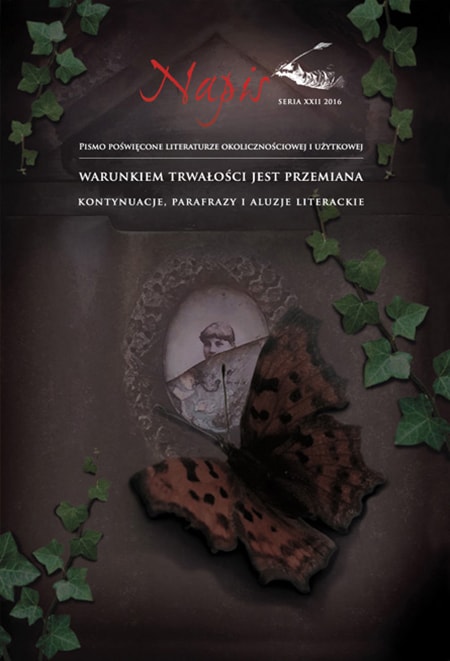
Wstęp (Agnieszka Bąbel, Agata Grabowska-Kuniczuk)
Okruchy wspomnień
Wojciech RYCZEK
Metabasis: kilka słów o apostrofie
Artykuł (PDF) Show abstract Hide abstract
The main aim of the paper is to make some remarks on apostrophe (aversio), its figurative nature and discursive functions. The figure of rhetorical address to some person other than judge has many affinities with other linguistic or stylistic devices, for instance exclamation, a rhetorical question, animation, personification, aposiopesis, prosopopoeia. As a rhetorical aversion it remains always involved in a communicative context. Using many modes of figuration, apostrophe conveniently gives the poet an opportunity to modulate his poetic voice. Then, it seems to be a mark of invested passion or sublime poetry.
The considerations on apostrophe are concentrated on three issues: forms and meanings of this figure in rhetorical tradition (Quintilian, Górski, Keckermann, Stanisław Kostka Potocki, Euzebiusz Słowacki), idea of apostrophe as a central figure of post-Enlightenment poetry (Jonathan Culler), and its role in a poetic invocation (for example of Jan Kochanowski’s Latin ode to Henryk Walezy and stanza addressed to ‘Heavenly Muse’ in Torquato Tasso and Piotr Kochanowski).
Krystyna MAKSIMOWICZ
Tarcia polemiczne, „responsy” i trawestacje w szermierce poetyckiej schyłku XVIII wieku
Artykuł (PDF) Show abstract Hide abstract
The author refers solely to coexisting polemic poetic works (prints and manuscripts) adhering to a literary convention of an initiating text. The poems treat significant events from the final years of the First Polish Republic and became the seed bed of the ideological struggle. Their polemic character was usually indicated in their titles beginning with words such as answer, reply, response, travesty, “tit for tat”, or with prepositions “on” (“on poetry”) or “to” (“to the author”). Perhaps they would not have won much renown if it was not for their presence in poetic skirmish. This paper indicates various battle methods used by polemicists and the propaganda impact of these works.
Agata SEWERYN
Cyganie sentymentalni i romantyczni (Kniaźnin – Moniuszko)
Artykuł (PDF) Show abstract Hide abstract
The paper focuses on the libretto Jawnuta by Stanisław Moniuszko, interpreting it in the context of theory of intertextuality as a type of hypertext created primarily from Cyganie [Gypsies] by Franciszek Dionizy Kniaźnin, as well as from pieces by Józef Korzeniowski, Kazimierz Brodziński, Jan Nepomucen Jaśkowski, Edmund Wasilewski, Władysław Syrokomla and Jan Czeczot. The author is particularly interested in the mechanisms of romantic reinterpretation of a drama of an 18th century sentimentalist. Therefore, first she analyses the works by Kniaźnin, indicating his pionieering character in Poland and how deep-rooted he was in the ideology of the European Enlightenment. Then she confronts her observations with the work by Moniuszko, extracting the conventions of romantic exoticism and individualism characteristic to substantial parts of the libretto Jawnuta and thus presents how romantic stereotypes of a Gypsy and the Gypsy culture modified the meanings inscribed in the Enlightenment’s text.
Tadeusz BUDREWICZ
„Białe anioły z skrzydłami jasnemi” (konstelacja parafraz)
Artykuł (PDF) Show abstract Hide abstract
The paper is a review of the functions of the citation from the novel of Narcyza Żmichowska Poganka [The Pagan] (1846): “I was once told that here on earth exist angels with bright wings”. This citation and the figure of an angel with bright wings express a romantic model of love and define a social role of a woman as a caregiver and man’s helper. The most famous use of this paraphrase of the citation appears in the novel Lalka [Doll] (1890) by Bolesław Prus. Literary historians were certain that Prus refered directly to Poganka.
In the article the author demonstrated that this fragment from Poganka had already functioned in the publishing market as a separate poem under the title Miłość do kobiety [Love to a Woman] since 1857. Up until the publishing of Lalka it was published several times in Warsaw and Lviv. It also became a basis for Aleksander Michaux’s paraphrase (pen name – Miron) whom Prus knew. The paraphrasis of Miron had been published several times before Lalka came into being. In the light of these findings the thesis on Poganka’s exclusivity as the basis for the citation in Lalka cannot be maintained.
The second part of the article analyses the role of the citation and other paraphrases (extensive rhyming paraphrase by Aleksander Kraushar) in literary texts which were created at the same time as Lalka or after its publishing. The intertexts to Żmichowska’s work can be found in the prose of Hajota (Helena Pajzderska), Wacław Sieroszewski, Janina (Kazimiera Stachowiczowa), Bronisław Grabowski and others. A certain regularity was discovered: the modification of the citation (paraphrase) is connected with the attitude of writers critical towards the romantic model and wtih democratic-reformatory views. The citations that remained unchanged and which sustained the standing of the Church were quoted by publicists and authors of educational treaties written in conservative spirit.
Aleksandra BUDREWICZ
Dickens, Drood i domysły
Artykuł (PDF) Show abstract Hide abstract
The article discusses a wide range of adaptations and paraphrases of an unfinished novel by Charles Dickens entitled The Mystery of Edwin Drood (1870). These “variations” can be divided into continuations of the plot of the novel, as well as scholars’ and readers’ investigations into the mysterious disappearance of the eponymous character. These “solutions” started to appear right after Dickens’s sudden death, and they have been published ever since. The article offers a chronological presentation and the discussion of the texts which refer to The Mystery of Edwin Drood. Some of the theatrical and film adaptations are mentioned. Some attention was also given to the Polish reception of the novel, although the main focus for the author is the way The Mystery of Edwin Drood has been appropriated and adapted, and the extent to which it challenged readers’ responses to the novel.
Bartłomiej SZLESZYŃSKI
„Breaking Bad” kochanego Stacha. Wokulski jako antybohater
Artykuł (PDF) Show abstract Hide abstract
The paper compares two main protagonists from Lalka [The Doll] by Bolesław Prus and from the series Breaking Bad by Vince Gilligan by indicating evident parallels between them. The figure of Walter White (which is in some way a summary of anti-hero trend in the contemporary series) is also used to present the protagonist of Lalka as a certain type of anty-hero and to emphasize debatable problems in his life. The protagonist of the American series becomes a reference point to such issues in Stanisław Wokulski’s biography as making fortune and spending it as well as the determination to achieve one’s goals. The events connected with commissions for Suzin are examined – Bulgarian and Paris episodes – which acquire new meanings, just like the relation between the Pole and the Russian.
Agnieszka BĄBEL
Ulotne jak dym? Kryptoreklama i przemiany obyczajów – o kampanii Polskiego Monopolu Tytoniowego na łamach „Kobiety Współczesnej” w latach 1931-1932
Artykuł (PDF) Show abstract Hide abstract
The paper is a dispute with the theses propagated in 1930s about backwardness and primitivism of Polish press advertising. The analysis of a series of texts published in the Warsaw’s weekly “Kobieta Współczesna” [Modern Woman] between October 1931 and November 1932 indicates astonishing similarity to the methods used in the USA by Edward L. Bernays, the father of public relations, in 1928-1929. The texts camouflaged as feature articles about fashion, good manners and decency or quasi stories and health warnings are aiming to create in female readers positive associations between smoking cigarettes (and the names of particular brands) and elegance, modernity, liberation, sensuality and life in comfort. This crypto advertising strategy, modelled on the American method, is an example of deliberate actions which contributed to breaking the long-lasting social taboo on smoking in public by woman in the Interwar Years. In order to gain access to new markets for particular products these actions have changed culture.
Karolina KORCZ
Pastisz czy kontynuacja? „Powrót Wolanda albo nowa diaboliada” Witalija Ruczinskiego wobec „Mistrza i Małgorzaty” Michaiła Bułhakowa
Artykuł (PDF) Show abstract Hide abstract
The paper discusses the problem of the relationship between Bulgakov’s seminal novel of the 20th century and the book based on it written by Witalij Ruczynski. On the one hand, Ruczynski refers to widely understood intratextual matters, the issues of structure, plot or language which relate to such categories as tradition and innovation. On the other hand, he refers to non-literary contexts in which function both the original and the novel inspired by Bulgakov’s book. The book by Ruczynski as well as The Master and Margarita illustrate socio-political processes of particular time and place. Thus, the analysis of selected motifs reveals more than just the principal theme of Powrót Wolanda albo nowa diaboliada [Woland returns or a new diaboliada], which is the search for and the discovery of the Russian national identity in the transformation period. It also allows to depict primary tendencies that took place in literature at the beginning of the 1990s of the 20th century, and, at the same time, illustrates how a work from a literary canon interacts with popular culture.
Mariola JARCZYKOWA
Wiersze żałobne dla Krzysztofa Radziwiłła w sylwie ze zbiorów Bavorovianum we Lwowie
Artykuł (PDF) Show abstract Hide abstract
The 17th century silva rerum from the collections of the Bavorovianum (manuscript 1332/II), currently stored in The Lviv National Vasyl Stefanyk Scientific Library of Ukraine, contains copies of unknown occasional works about the Radziwiłł family from Birże. The most elaborate set consists of mourning poems for prince Krzysztof (d. 1640): Lament na pogrzeb księcia pana wojewody wileńskiego… [The lament for the funeral of sir prince voivode of Vilnius], three poems Korony temuż [The crown to thee], the tombstone, and Na chorągiew temuż [To the flag to thee]. The texts are preceded by a foreward that introduces the author, Walerian Gorzycki, and characterises the works, clarifying the evoked settings and referring to the genres issues. Lament… emphasises primarily the hetman’s military merits and his religious patronage. The three poems refer to the motif of crowns awarded to victorious commanders and commemorate the liberation of Smoleńsk and Mitawa. The poem Na chorągiew… is a Polish language version of a latin inscription placed on the flag prepared for the funeral of Radziwiłł that has been documented in 17th century prints (by Siestrzencewicz and Kmita).
Walerian Gorzycki, [Wiersze żałobne] (oprac. Mariola Jarczykowa)
Aleksandra BŁASIŃSKA
„Magdalena” Josefa Svatopluka Machara w tłumaczeniu Zofii Trzeszczkowskiej. „Bratnia kontrola” Zenona Przesmyckiego – świadectwo problemów przekładu zachowane w korespondencji
Artykuł (PDF) Show abstract Hide abstract
The paper presents the circumstances of translating Josef Svatopluk Machar´s Magdalena by Zofia Trzeszczkowska (Adam M-ski). The translator had prepared a list of questions which she sent to an “Old Czech” – Zenon Przesmycki for consultation as she faced difficulties in rendering the verses into Polish. The material is a source of information of poet’s language capacity, and it also documents hints given by Miriam himself (drafted just above the translator’s questions), and thereby his influence on the final version of Magdalena in the Polish language.
Wykaz trudności przekładowych sporządzony przez Zofię Trzeszczkowską (oprac. Aleksandra Błasińska)
Ewa MIKUŁA
E-podręczniki a rozwój edytorstwa cyfrowego
Artykuł (PDF) Show abstract Hide abstract
The development of technology visible in every sphere of social and cultural life has not been without influence on editing. So as to meet the expectations of the generation called “digital natives” editors faced a difficult task of adjusting traditional analytic language and research methods (and also creating completely new tools) for the purposes of electronic editions. This can be proved by the fact that digital editing is one of the five main activities of the Digital Humanities Centre at the Literary Research Department of the Polish Academy of Sciences.
Modern editing technologies play an important role not only on the market of “traditional” e-books, but also in the field of electronic educational publications. In this paper I analysed e-textbooks, mostly created by the MEN [The Ministry of National Education] in the programme “Cyfrowa szkoła” [“Digital school”], which have been in use for students and teachers since September 2015, and also proposals of two publishing houses: WSiP and Nowa Era.
Katarzyna STANNY
Oblicza przemian w Sztukach Pięknych
Artykuł (PDF) Show abstract Hide abstract
This paper aims to portray a remarkably diverse range of phenomena related to transformations in art: from the transformation of sculptor’s or painter’s matter into a work of art (on the example of works of Michelangelo and Leonardo da Vinci), through the spiritual metamorphosis of the artist whilst creating a piece, up to reciprocal flow of inspirations, feelings, emotions, and consciousness or its absence on the creation of the artefact that shapes the spiritual experiences of the audience. During the human engagement in the work of art, those phenomena can also occur with respect to faith by means of an artistic expression of a purely religious character (e.g. Vatican’s monumental and magnificent architecture).
“The aging” of a piece of art or restoration activities that block this aging are examples of changes of the matter owing to the technology that changes the perception of the work over time; while, art devoted to glorifying – and inducing – social evolutions and revolutions is in the service of propaganda and politics (e.g. works created in ancient Egypt, the Third Reich, North Korea, the USSR).
Artistic visions often depend on the influences of psychoactive substances on the consciousness of the artist and his perception of reality which results in its completely different reception (Witkacy’s portraits). Is such artistic vision created under the influence of substances objective? Where (if at all) in the modern world can we trace boundaries between art and non-art? This text aims to address and answer these questions and doubts.
Warunkiem trwałości jest przemiana. Prace studentów ASP w Warszawie
Komentarze autorów do fotografii
Julian Ursyn NIEMCEWICZ, Mowy sejmowe 1788-1792, wybór i opracowanie Aleksander Czaja, Oficyna Wydawnicza ASPRA-JR, Warszawa 2011 (Igor Barkowski, Niemcewicz w kanonie czy kanon Niemcewicza? Głos w dyskusji)
Literackie obrazy podróży, red. Monika Urbańska, Łódź 2014, Wydawnictwo Uniwersytetu Łódzkiego; Doświadczenie, red. Monika Urbańska, Łódź 2014 (Bożena Mazurkowa, Młodzi łódzcy edytorzy o podróżach i innych ludzkich doświadczeniach)
Tadeusz BUDREWICZ, Wierszobranie (druga połowa XIX wieku), Wydawnictwo Naukowe Uniwersytetu Pedagogicznego, Kraków 2016 (Grażyna Borkowska, Prus pisze wiersze)
Literatura i kultura schyłkowego PRL-u, pod red. Kamili Budrowskiej, Wiktora Gardockiego i Elżbiety Jurkowskiej, Wydawnictwo IBL PAN, Warszawa 2015 (Katarzyna Kościewicz, Kultura schyłkowego PRL-u w nowych odczytaniach)
Kamila TUSZYŃSKA, Narracja w powieści graficznej, Polskie Wydawnictwo Naukowe, Warszawa 2015 (Konrad Niciński, Powieść graficzna w poszukiwaniu metajęzyka)
Karolina GOŁAWSKA, Anna PETLAK
Sprawozdanie z naukowego sympozjum jubileuszowego „Na szlakach literatury…”, poświęconego Profesor Barbarze Wolskiej i okazji siedemdziesiątej rocznicy urodzin i jubileuszu czterdziestopięciolecia pracy naukowej
Noty o autorach artykułów

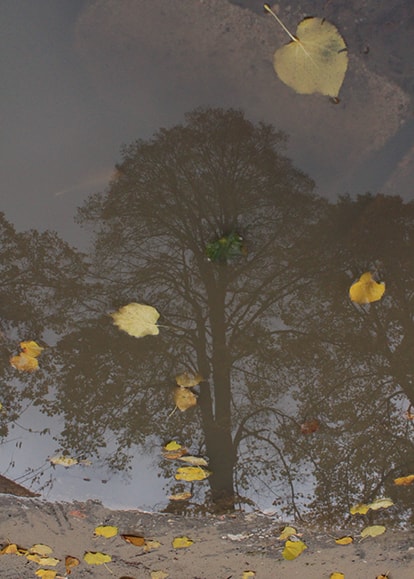
Joanna Komuda
Poszukaj tam, w splątanych burzach traw,
w naczyniach roślin napełnionych życiem,
gdzie w kroplach deszczu czeka cię odbicie
Boga żywego w łunach żywych barw.
Liście po żyłce odczytaj do dna,
aż w oczach twoich jak drzewa wytrysną,
aż duchy światła w powietrzu zawisną.
Naucz się życia, co przez życie trwa.
K. Baczyński, * * * [Nie stój u ciemnych świata wód…], w: idem, Utwory zebrane, oprac. A. Kmita-Piorunowa, K. Wyka, Warszawa 1994, t. 2, s. 19.
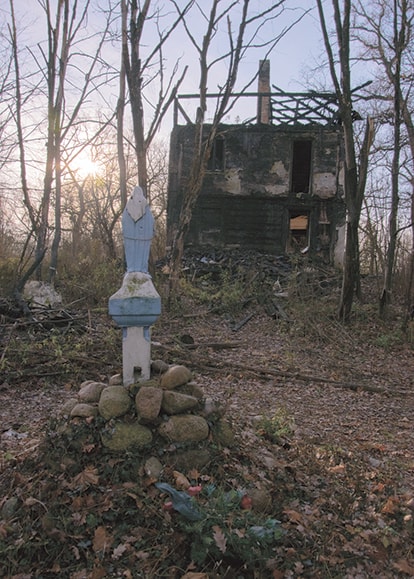
Jan Sielski
Trwałość kontynuowana jest w pamięci. Spalony dom to przemiana, a postawiony przed nim posąg to pamięć ludzka, która gwarantuje kontynuację trwania w tym, co fizycznie przeminęło, ale nadal trwa w ludzkiej pamięci.
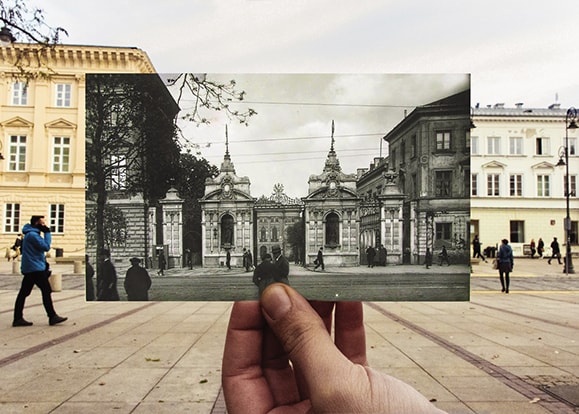
Francesca Inzitari-Ćwir
Bez komentarza.
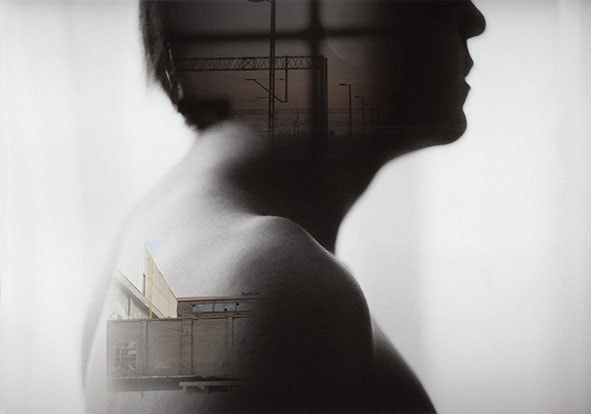
Weronika Kwiatkowska-Forero
Człowiek jest istotą, która aby przetrwać, nieustannie modyfikuje swoje otoczenie. Warunkiem jego przetrwania jest ciągła metamorfoza środowiska, w jakim żyje, a także kultury i warunków społecznych.

Agata Chodera
Nieustannie naruszajmy granice stałej, pewnej, spodziewanej i niezaskakującej strefy komfortu. Pozwólmy sobie w ten sposób zaistnieć, przetrwać i trwać.
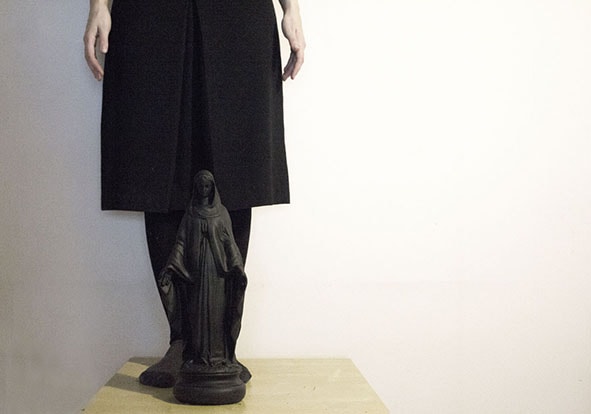
Aleksandra Lis
Bez komentarza.

Nikodem Rosiński
„Trwałość – okres, w którym obiekt zachowuje swoje właściwości użytkowe.” (definicja popularna za Wikipedią).
Czas wymusza / determinuje zmianę. Obiekt osadzony w danej czasoprzestrzeni oddziałuje na nią, zaś „otaczająca” go przestrzeń stopniowo wywiera na niego wpływ poprzez zmiany zachodzące w hipotetycznej przestrzeni w procesie upływu czasu. Zmiany determinuje również zmiana położenia obiektu względem otaczającej go rzeczywistości. Dom na wsi pozostawiony „na pastwę losu”, opuszczony, trwa dzięki zmianom strukturalnym wymuszonym warunkami pogodowymi. Pomimo upływu lat „zmęczony egzystencją” nadal zachowuje swój kształt pomimo przeszkód, które stawia natura. Czas z tą samą prędkością idzie naprzód, a materia w kształcie domu, zmieniając niekiedy swój kształt (pęknięcia, dziury, wykrzywienia), nadal zachowuje swoją pierwotną formę dzięki zmianom, które zostały na niej wymuszone.

Marta Chudek
Obserwując żywe organizmy, takie jak kwiaty, możemy uznać je za efemeryczne i delikatne. Natomiast kiedy zmienią swoją formę, stają się nagle długotrwałe i przeciwstawiają się zjawisku przemijania. Tak zachowane obiekty mimo upływu czasu pozostaną takie same.
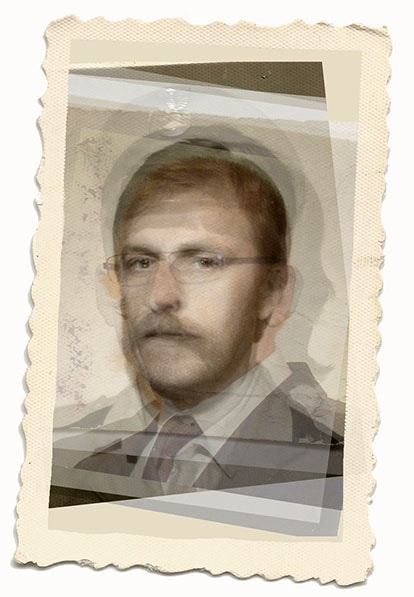
Karolina Ptasznik
„Warunkiem trwałości jest przemiana” – choć pierwotnie skojarzyło mi się z oksymoronem, po chwili zastanowienia znalazłam w tym logikę.
To słowa uniwersalne, bo pozwalają odnieść się zarówno do sztuki, architektury, przekazywanych latami poglądów, jak i nas samych. Wszystko, co jest dziś, było już dawno i tylko w wyniku bezlitosnego upływu czasu przybrało teraźniejszą formę.
Na fotografii jest pięć nałożonych na siebie zdjęć przedstawiających mojego tatę. Od małego chłopca, przez młodego mężczyznę w wojsku, aż po dojrzałego już męża, ojca i dziadka.
Mijające lata odcisnęły się na jego fizyczności, zmieniając wizerunek, rozjaśniając włosy. Zapuściły gęste wąsy i zmusiły do włożenia okularów na nos. Czas biegnie w zawrotnym tempie i mimo iż zmienia pewne cechy zewnętrzne, to utrwala zarazem wyznawane wartości, spojrzenie na świat i umacnia charakter.
Tata jest dla mnie wzorem, który im jestem starsza, tym bardziej doceniam. Podziwiam go za spokój, który towarzyszy mu nawet w najmniej sprzyjających warunkach i którego ja codziennie jeszcze w sobie szukam.
Do dziś powściągliwy, nie dawał mi się „mazać” za młodu i służył radami, które nawet po latach potrafię zacytować.
Pewnego dnia przestałam rosnąć, a zaczęłam dorastać i dziś razem z rodzicami obserwujemy się wzajemnie, widząc, jak zmienia nas każdy dzień – a jednak trwamy szczęśliwie razem w tych samych relacjach.
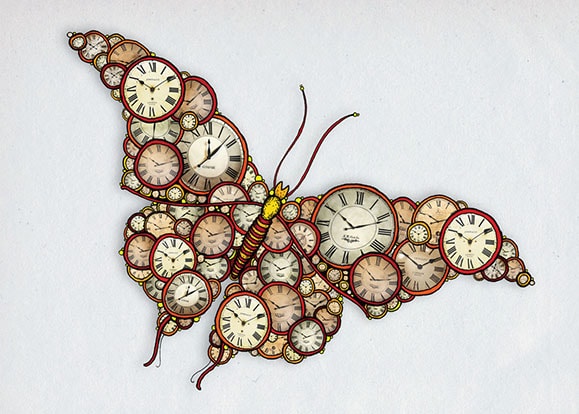
Mateusz Kluczny
W swojej pracy wykorzystałem wizerunek motyla jako symbol przemiany, ulotności oraz przemijania czasu, który podkreśliłem, wykorzystując tarcze zegarów.
W naszej kulturze motyl przywodzi na myśl ponowne narodziny, czyli naturalny cykl natury, która swą niezmienność zawdzięcza ciągłym przemianom, jakimi są narodziny i umieranie. Ta naturalna kolej rzeczy w świecie, w którym żyjemy, powoduje właśnie ową trwałość.

Alicja Wolanin
Warunkiem trwałości jest zmiana. Zmiana definiuje trwałość. Jest jej nieodłącznym czynnikiem. Na fotografii przedstawiłam to za pomocą niezwiązanego warkocza, który sam się rozplata. Zmienia się, ale pozostaje trwały.
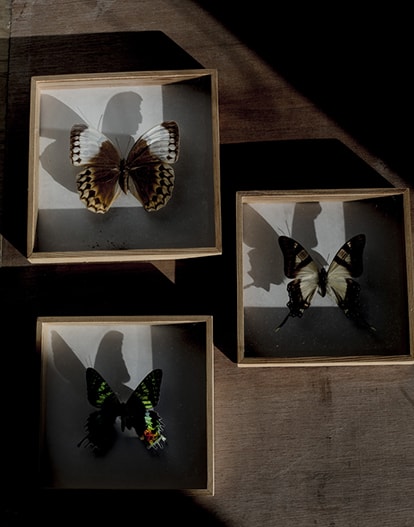
Anna Kraszewska
…i piękno motyli przemija, ale niektóre można cały czas podziwiać…
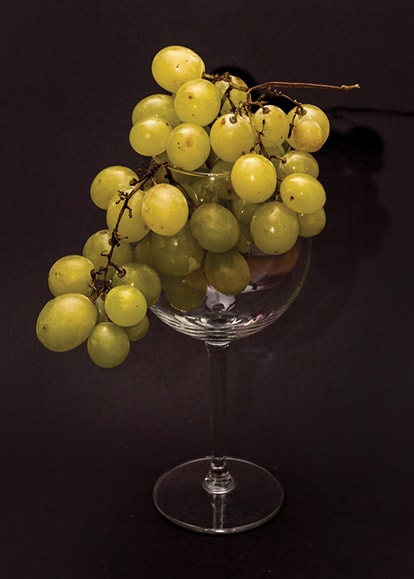
Karina Kuberska
Bez komentarza.
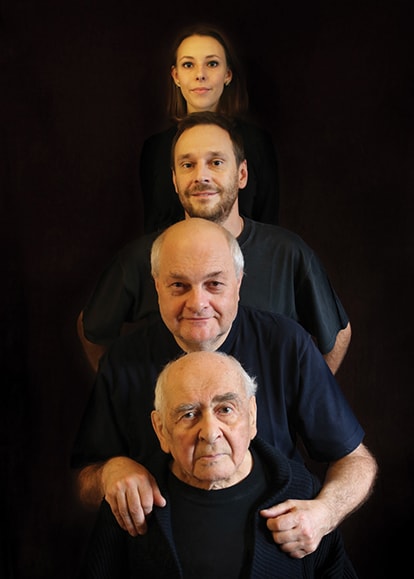
Alicja Kamińska
Rodzina jest jedną z największych wartości, jakie posiada człowiek. Jednakże, żeby rodzina mogła trwać, musimy robić miejsce dla nowych pokoleń, które z czasem będą nas zastępowały i będą wsparciem na starość.

Natalia Dziarczykowska
Nietrwałość, czyli coś kruchego, łatwego do destrukcji. Poprzez zmianę staje się trwałe. Tak jak nić wełny zmienia swoją postać w trwały splot, tak i my, dokonując przemiany, stajemy się trwalsi.

Milena Kossakowska
Każda pora roku przemija, przemieniając się w kolejną. Gdy przychodzi zima, kończy się jeden dwunastomiesięczny cykl, ustępując miejsca następnemu. Te przemiany to istotny element zachowania trwałości i ciągłości w przyrodzie.
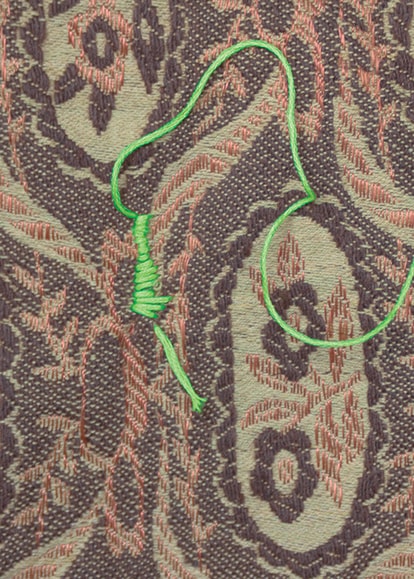
Nadia Markiewicz
Bez komentarza.

Maria Nitek
„Jakżeż się człowiek może urodzić, będąc starcem?”
Ewangelia według św. Jana 3, 4
„Weź laskę swoją i wyciągnij rękę na wody Egiptu, na rzeki i na jego kanały, i na jego stawy, i na wszelkie jego zbiorowiska wód, a zamienią się w krew. I będzie krew w całej ziemi egipskiej, w naczyniach drewnianych i kamiennych.”
Księga Wyjścia 7, 19-20
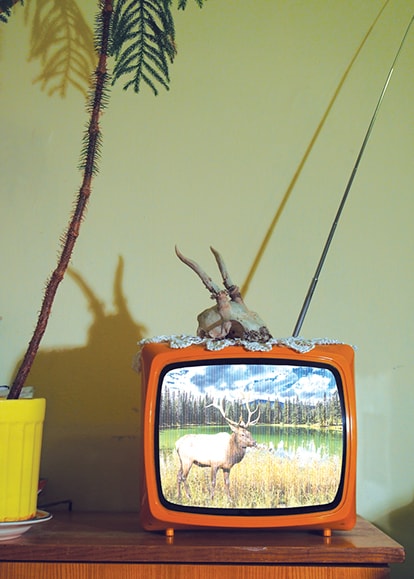
Julia Wiśniewska
„Korona przeczekała głowę”*, czyli co decyduje o terminie przydatności motywu?
Wiersz Wisławy Szymborskiej Muzeum to liryczny zbiór reliktów przeszłości, wynalazków świata – zmaterializowanych już myśli, którym siła sprawcza zdecydowała się nadać kiedyś cielesny charakter. To one, przeżywając człowieka, stają się jednocześnie smutnym dowodem na jego nieuchronną przemijalność.
Co sprawia, że wytwór ludzkiego umysłu (czy to w postaci konkretnej i już fizycznej, czy też werbalnej i abstrakcyjnej) może istnieć pomimo wszystko? Czy aby stać się żywym i odnieść zwycięstwo nad symboliczną śmiercią, musi on stale pojawiać się w formach zmienionych, przekształcanych i przystosowywanych do odbiorcy obciążonego już innym bagażem doświadczeń?
Czy trwałość motywu zależy od jego ponadczasowej formy, od odpowiednio wyważonych proporcji – zmieszania starego z nowym, czy też, idąc dalej, po prostu od adaptacyjnych umiejętności odbiorcy?
A wreszcie, czy istnieje ostatni, krańcowy i w pełni wyczerpujący etap w linearnym rozwoju motywu? Gdzie jest granica przemiany, która doprowadza motyw do śmierci i kto / co o takowej może decydować – powszechność jego istnienia czy raczej indywidualne upodobania odbiorcy? Czym w kontekście tych rozważań staje się kulturowy topos „jelenia na rykowisku”?
* W. Szymborska, Muzeum, w: eadem, Widok z ziarnkiem piasku, Poznań 1996, s. 16.

Joanna Komuda
Wiedza jest jak kwiat, który należy stale pielęgnować, aby mógł wciąż rozkwitać na nowo. Dbajmy o niego i nie pozwólmy, by zginął, przysypany prochem czasu.

Kamila Leszczyniak
Czy dzieło sztuki może się zestarzeć? Materialnie trwa ono w przeszłości, jednakże ujawnia nowe wartości i znaczenia. Nie starzeje się. Dopasowuje się do nas, do naszych czasów.
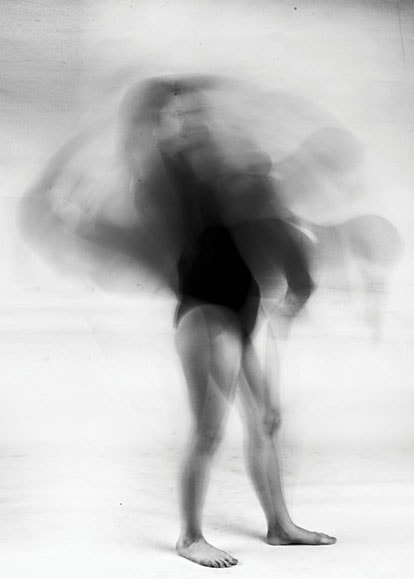
Mateusz Kajma
W trakcie nieustających przemian zachodzących w naszym życiu twardo stąpamy po ziemi w poszukiwaniu trwałości pomiędzy tym, co zmienne i przemijające, a tym, co pewne i trwałe.
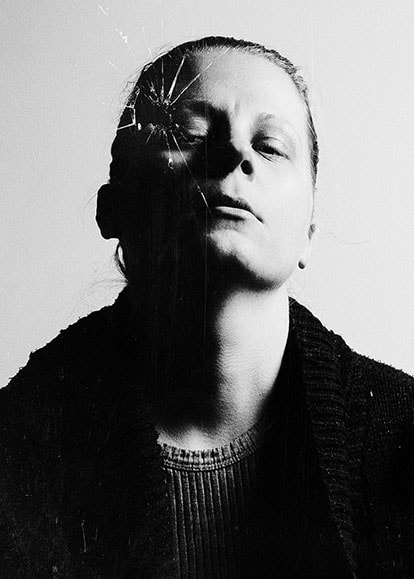
Magdalena Szczęśniak
Człowiek przez całe życie poznaje świat, dzięki zdobytym doświadczeniom kształtuje swój charakter. Pęknięta szybka ilustruje „przeszkody”, trudne sytuacje, które ostatecznie (w mniejszym bądź większym stopniu) formują nasze postawy.
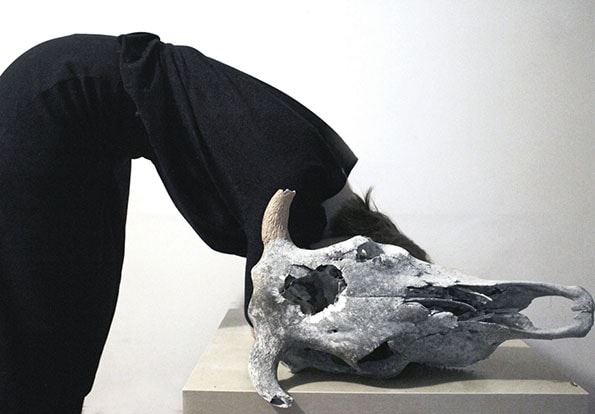
Aleksandra Lis
Najbardziej naturalną, a przez to najstarszą formą przemiany zapewniającej bezpieczeństwo jest zdolność mimikry.
Przekładając to na język fotografii, chciałam przypomnieć fakt, że nie tylko zwierzęta używają tej umiejętności, lecz przede wszystkim ludzie – zmieniając się nie do poznania dla własnej korzyści lub ukrywając swoją prawdziwą osobowość, wpasowując się w ramy społeczeństwa.
